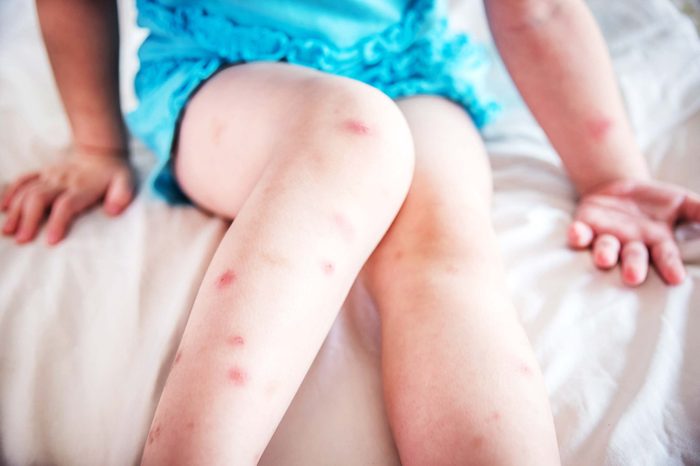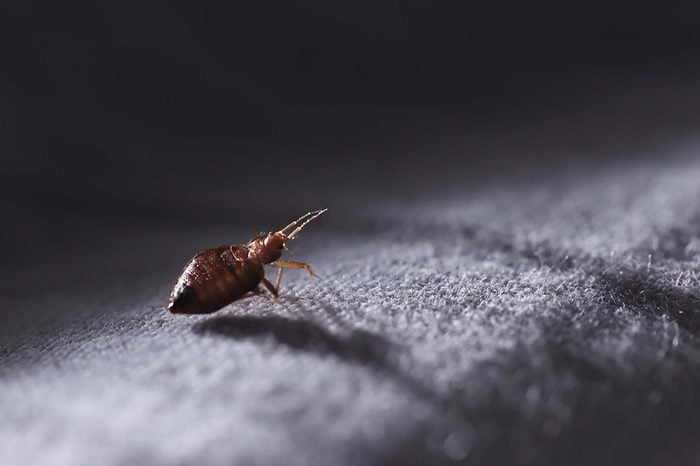
We’re attracted to certain colors
As a study in the Journal of Medical Entomology showed, bed bugs really like dark red and black (so maybe don’t choose bedding in those colors) and tend to stay away from white, green, and yellow. Researchers think dark red and black offer good protection from predators like ants and spiders. And since we have a red exoskeleton, it’s likely that we’re drawn to these colors because it suggests the presence of other bed bugs—and we generally like to stick together to stay safe. Keep an eye out for these 8 warning signs you’re about to have a bed bug problem.

Heat is our number-one killer
Exterminators treat rooms and furniture with a combination of dry steam cleaning, deep heat, and chemical treatments. If your clothes have been in an infested room (or your sheets on a buggy bed), throw them in a hot dryer (at least 122 degrees) for 20 minutes to kill bed bugs, according to the University of Minnesota. Don’t miss these secrets from professional exterminators about bed bugs and other pests.
Bunch of bites? Don’t freak out
According to the Environmental Protection Agency (EPA), bed bugs depend on blood as a food source. In order to mature into adults, we must feed at least once during each of our six life stages. Adult females also need blood in order to produce eggs, which are the size of a speck of dust. Finding the right blood vessel may take more than one nibble into the skin though, so we usually make more than one bite—that’s why the number of bites you receive isn’t indicative of the number of bed bugs that have fed on you. This is how you can prevent and destroy bed bugs.

We’re very sensitive to movement
We like to feed on sources that are still—hence our attraction to areas around where people sleep, be it in an apartment, house, hotel, dorm room, or on a cruise ship, bus, or train. “Bed bugs are sensitive to movement and will flee and hide,” explains Jody Gangloff-Kaufmann, a senior extension associate at Cornell College of Life Sciences and Agriculture in Babylon, NY. “When people sleep soundly they come out to bite.” So if a sleeping person moves while we’re feeding, we’ll probably withdraw our beak and search for a blood meal on another part of their body.
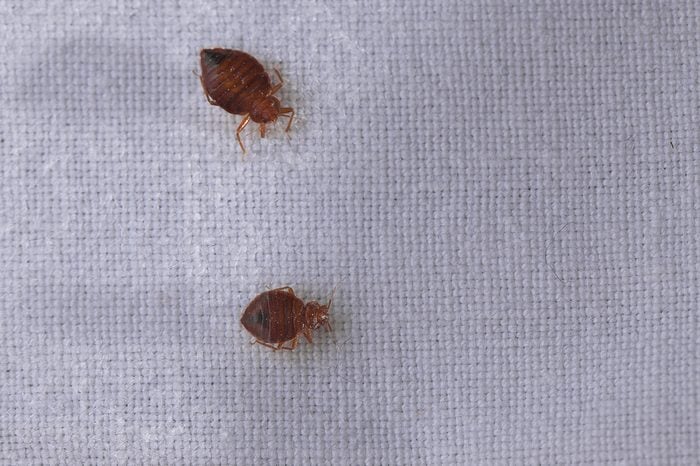
We’re not picky
We’ll nibble on any part of the body that’s exposed while you sleep, including the hands, neck, face, shoulders, legs, and arms, according to the National Pest Management Association. If it’s mosquitos that have been keeping you up, don’t miss these 5 ways to prevent mosquito bites while you sleep.
We’re fast eaters
It takes bed bugs three to 10 minutes to become engorged, and after feeding we normally go to a secluded location to digest our meal, according to the University of Kentucky College of Agriculture. Often, we’ll void remains of earlier blood meals while still feeding, which is why you might find rusty or tarry spots on your sheets. We know—we’re the worst house guests!

We prefer to feed on humans, but…
We’ll feed on other mammals (like the family dog or cat) and birds as well. These foods help relieve bug bites from bed bugs and other pests.
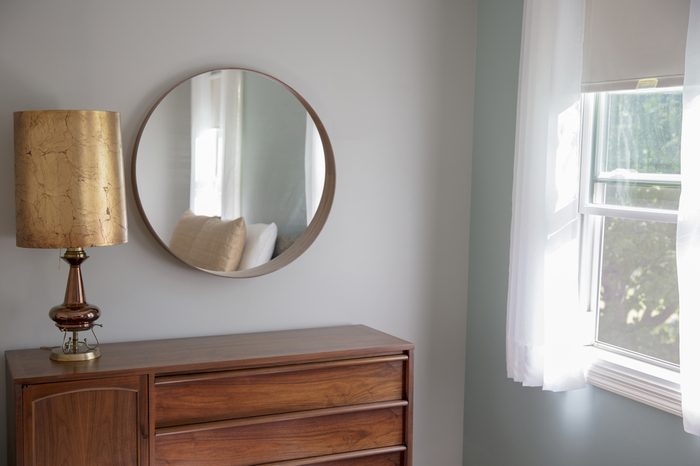
We’re excellent hiders
Our bodies are slim and flat (about the width of a credit card), so when we’re not feeding, we can squeeze into really small spots. Some of our favorite hiding spots are the seams of mattresses, box springs, bed frames, headboards, dresser tables, inside cracks or crevices, and behind loose wallpaper and wall hangings. Bed bugs can live several months without a blood meal (a whole year if conditions are cool), reports the University of California Agriculture and Natural Resources, so we can chill there for a long time too.

We love clutter
A cluttered home gives us more places to hide and makes it harder for you to locate and eliminate us. According to the University of Virginia Department of Entomology, bed bugs can nest in personal belongings including books, stuffed animals, picture frames and more. Here are quick ways to eliminate clutter in your home.
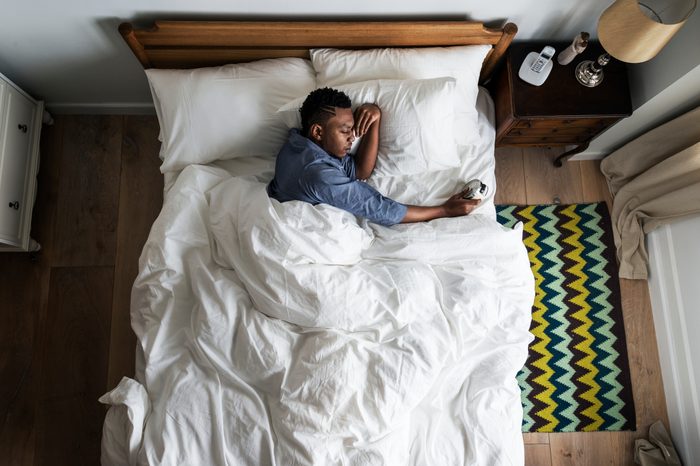
While we prefer to feed at night when our hosts are asleep, but…
We’re also opportunists. Our peak feeding time is anytime you’re snoozing, so if you work nights, we will come out and feed on you during the day if we’re hungry. We’re attracted to a human’s body temperature, and even more so, to the carbon dioxide they exhale, Gangloff-Kaufmann explains.

We get around
We’re usually transported from place to place as people travel, hitching a ride in the seams and folds of luggage, overnight bags, folded clothes, bedding, and furniture. Most people don’t realize we’re stowing away as they tour around, infecting areas as they travel. Always inspect your accommodations for signs that we’ve checked in, too—look for live insects, blood stains, and dead bugs throughout the room, especially around the sides of the bed and headboard, suggests Gangloff-Kaufmann. Keep in mind that bed bugs are not a sanitation or cleanliness issue, which is why we can be found in no- to five-star hotels. Other tips: Don’t put your clothing or luggage directly on the bed (if bed bugs are on the bed, we can easily crawl in) and use metal luggage racks (we’re not good at climbing metal surfaces). Here are other luggage-packing mistakes you don’t want to make.

We’re creepy crawlers
Bed bugs don’t have wings and aren’t capable of flight. Unlike other wingless insects, such as fleas, we’re not equipped to jump long distances either. So how do we move from host to host? We crawl. Fun fact: Though we can travel over 100 feet in a night, we tend to live within eight feet of where people sleep, according to the Centers for Disease Control (CDC). Here’s how to spot bedbugs in your hotel room.
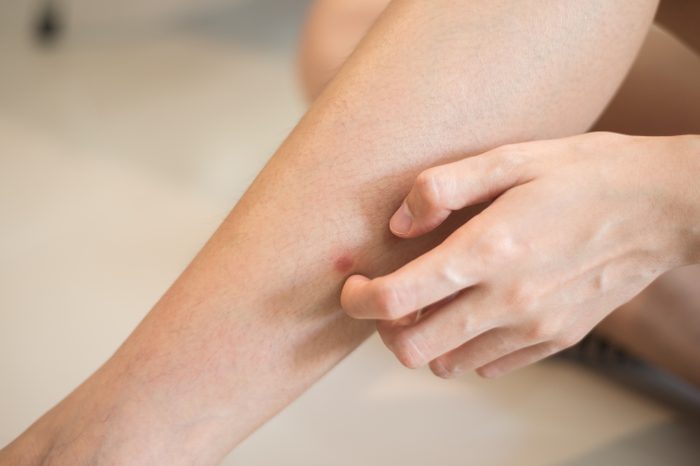
If you look closely, you’ll see signs of us
Besides bites, some indications we’ve infested your space are blood spots on your sheets, the presence of our feces, and skins we’ve cast off while molting. It’s easy to get our bites confused with those from fleas, mosquitoes, and other pesky pests. According to the American Academy of Dermatology, bed bug bites are often grouped together in a small area and sometimes may occur in a line or a zigzag pattern. Bites normally look like small, flat, or raised areas that may become inflamed, itchy, red, or blistered. They may take a few days to begin causing symptoms, though not everyone reacts to bed bug bites at all or in the same manner—it mostly depends on how you react to the anti-coagulant we inject along with our saliva when we pierce the skin. If you’ve been bitten many times, you may have a bigger bite and your response may be more intense as well. Here’s how to identify 9 types of bug bites, including bed bugs.

We don’t spread disease
If there’s one good thing to say about us, that’s it. The itching we cause may lead to excessive scratching that can increase the chance of a secondary skin infection, but that’s usually the worst physical effect, according to the CDC. When it comes to disease, worry more about mosquito bites instead. These are the facts you need to know about Zika virus.

You can help keep us from invading your home
Employ these simple precautionary measures to protect your home from bed bugs, suggested by the EPA: Check secondhand furniture, beds, and couches for signs of bed bug infestation before bringing them home. Use a protective cover that encases mattresses and box springs and eliminates many hiding spots (buy a high-quality encasement that will resist tearing and check it regularly for holes). Vacuum frequently to remove any successful hitchhikers. Reduce clutter. If you use shared laundry facilities, transport your wash in plastic bags and remove laundry from dryer directly into the bag, then fold it at home.
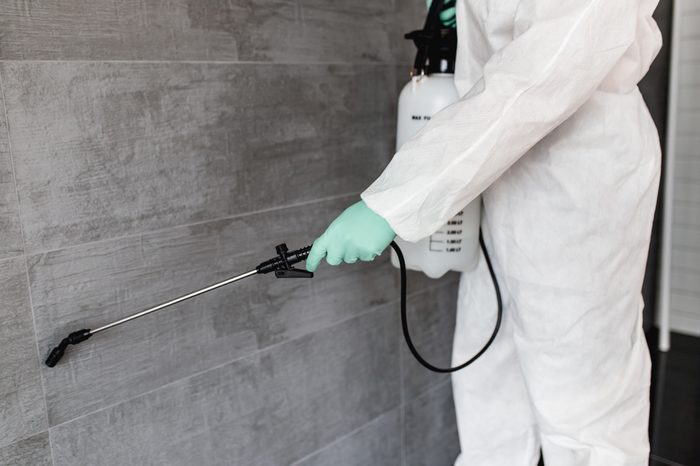
Getting rid of us on your own is challenging
DIY treatment is complex because we hide so well and reproduce so quickly, Gangloff-Kaufmann says. Besides that, the egg stage is resistant to many forms of treatment, so completing the job with a single attempt may not be sufficient. The EPA provides DIY bed bug treatment how-tos, but before you try to go it alone know that achieving complete control can take weeks to months, depending on the nature and extent of the infestation. While you’re thinking about your home and health, these are the 10 ways your messy home is making you sick.

